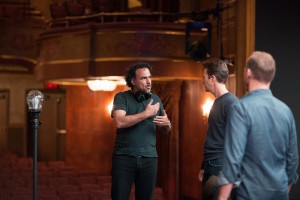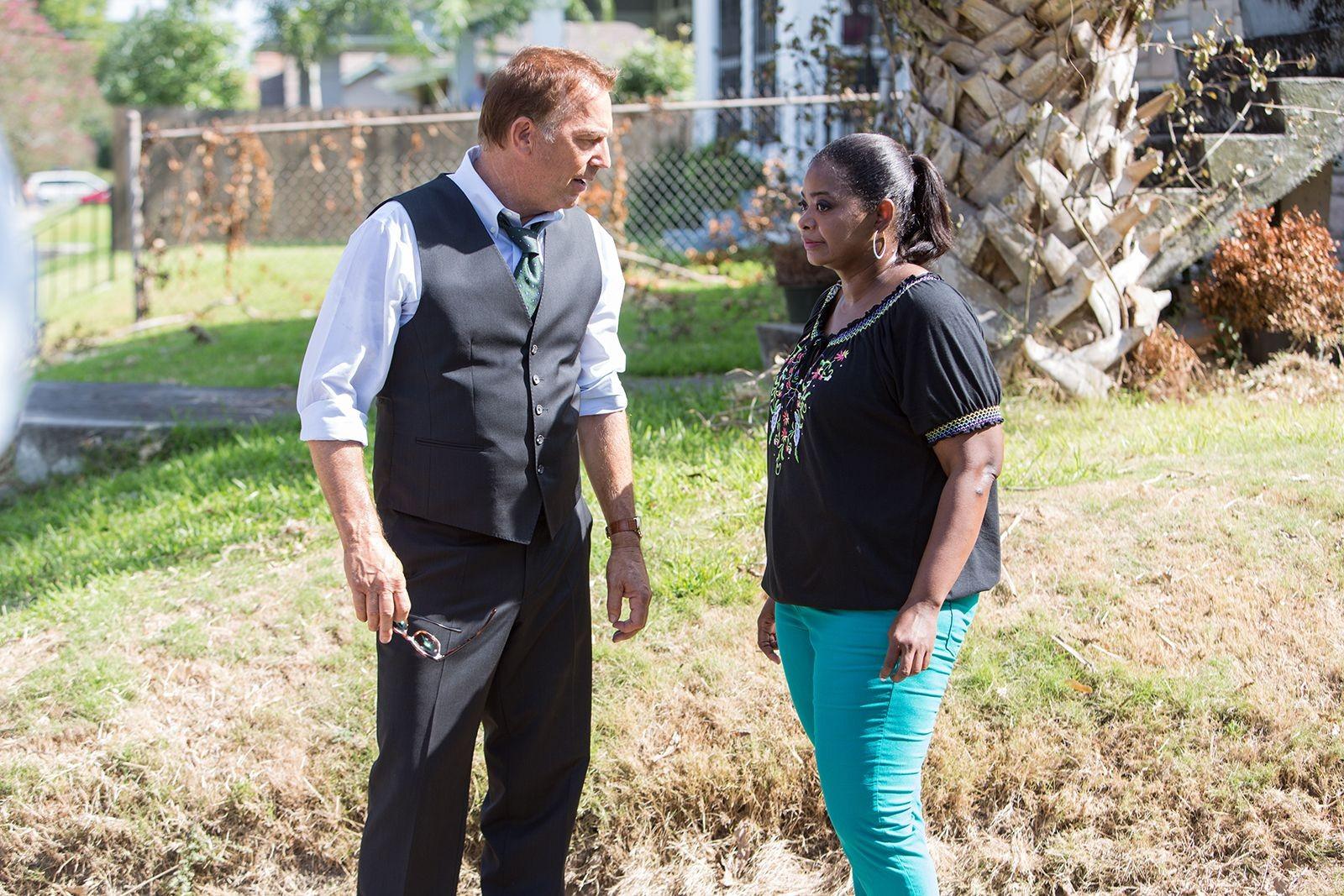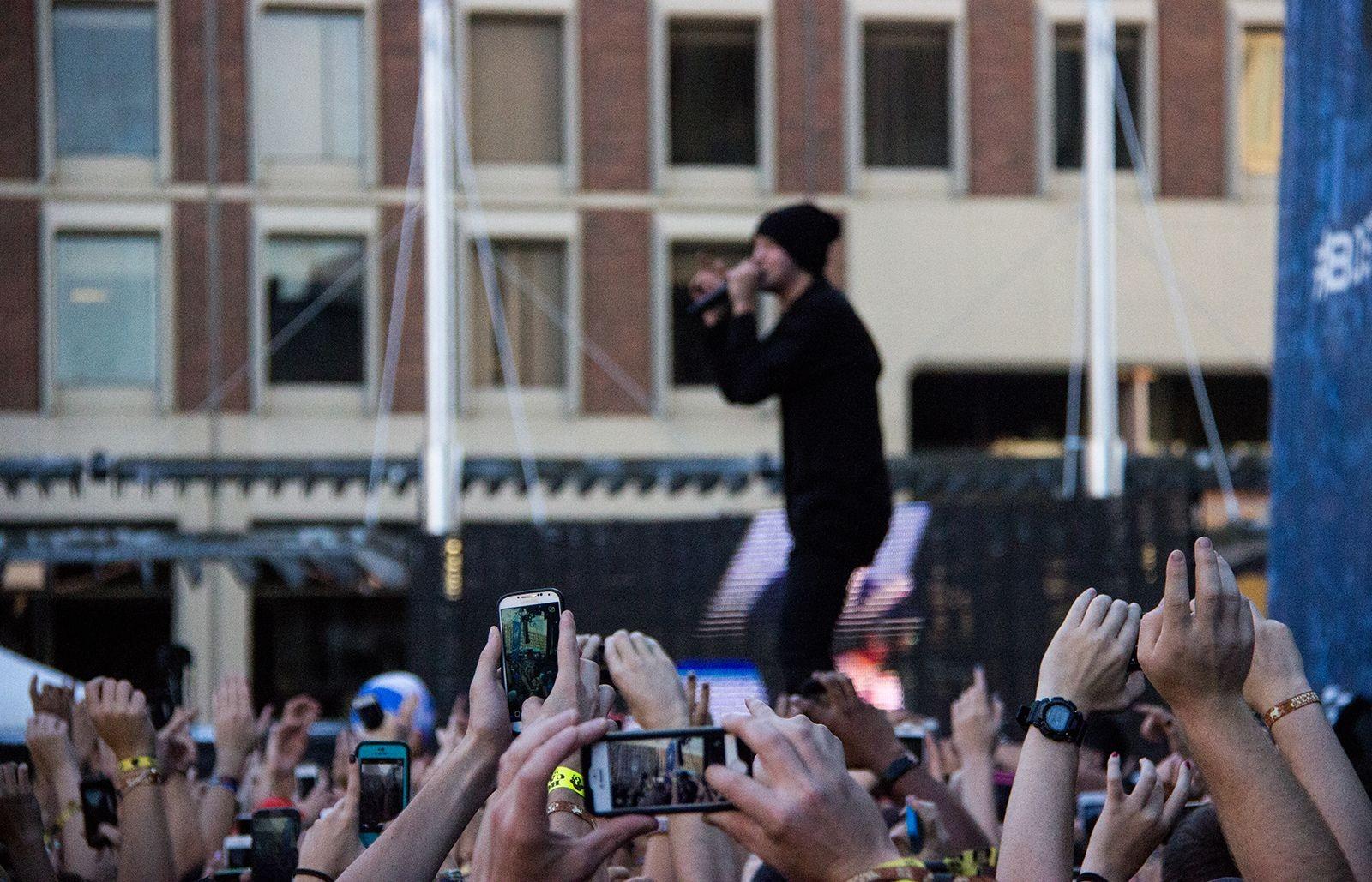While shooting his new film “Birdman,” director Alejandro Gonzáles Iñárritu handed his cast and crew a photo of Philippe Petit making the high-wire walk between the Twin Towers of New York’s World Trade Center in 1974.
“I told them, ‘This is the film,’” he said in a conference call on Sunday. “Because it was that. We were walking the wire.”
An apt comparison, as “Birdman” is precariously balanced on an act of technical finesse: The near two-hour film appears as one continuous take.

“I wanted the long take to make the people really feel the experience of this guy [main character Riggan Thomson]…to wear the shoes of the character and experience his emotions,” Iñárritu said. “I thought that was the most effective way to do that.”
Shooting the film in this way required a rigorous and streamlined schedule for both cast and crew, so much so that “Birdman” only took 29 days to shoot.
“We rehearse a lot before arriving to the set,” Iñárritu said. “So basically it was a very intense and meticulous work of precision with actors and camera and crew. Everything [was] designed to match the needs of the film.”
Iñárritu also worked to make things as clear as possible for the actors, he said, identifying an objective for each character in every scene.
“And for me, obviously, I know the thing was the faster, the better…and to be really playing as if it was a life or death decision,” he said. “I mean really playing honest and full, as [if] the stakes were high.”
Rather than creating an inhospitable environment, Iñárritu said these shooting conditions actually had the opposite effect.
“It’s like playing live in a concert instead of recording in a studio,” he said. “There’s a brotherhood that is different.”
“Birdman” — also known as the “The Unexpected Virtue of Ignorance” — tells the story of Riggan Thomson, played by Michael Keaton, a washed-up superhero actor dying to be taken seriously. In order to escape the public’s view of him as the titular Birdman, Riggan puts on a Broadway play based on Raymond Carver’s 1981 collection of short stories titled, “What We Talk About When We Talk About Love.”
Aided in his mission by an overwrought manager (Zach Galifianakis), a crazed and egocentric lead actor (Edward Norton), an insecure lead actress (Naomi Watts), a volatile love interest (Andrea Riseborough) and his nihilistic daughter/assistant (Emma Stone), Riggan attempts to reclaim his past cinematic glory.
The choice of Keaton in the role of the superhero-turned-serious-actor carries a delightful hint of meta-reality to the film. Keaton’s turn at Batman in Tim Burton’s “Batman” and “Batman Returns” in 1989 and 1992, respectively, is one of his most notable roles in a career that has arguably stagnated in the last 20 years.
“He [Keaton] was very bold, accepting and trusting me in this role,” Iñárritu said.
But he said he chose Keaton for reasons beyond the career parallels.
“He has the craft and the range to play in drama and comedy, and very few actors can do that,” he said. “And he plays a prick in this film, and I needed somebody who was adorable, somebody who really you could like. And he has that…likeness that was required. So all these things make him the perfect choice.”
Riggan’s ego, portrayed almost as an additional character in the film through gruff, foul-mouthed voiceovers heard only by the audience and Riggan, is treated almost like a mental illness, or a “disease of society,” as Iñárritu put it.
“I think the ego is a necessity…and it’s a presence in all of us,” he said. “But I think when the ego takes over and we attach our personalities to the ego and he domains absolutely a person without being discovered or without being controlled, that’s a mental disease. That’s the big dictators in the world and people who have harmed humanity badly.”
This near-personification of Riggan’s deepest, most self-centered desires is an exaggeration — along with the fact that Riggan also appears to have moments of telekinesis throughout the film — but one that Iñárritu said can still impart a lot to audiences living through the current celebrity-obsessed social media climate.
“The need of validation and all those things were explored deliberately and…with humor,” he said. “[You can] laugh about it because they are tragic, but at the same time, they can be really fun.”
Comedy is a new realm for Iñárritu. His past films, such as 2010’s “Biutiful” and 2006’s “Babel,” were foreign dramas that focused on characters in emotional and physical turmoil. And “Birdman” certainly has its share of drama, contemplating questions concerning the nature of fame and the industry that appear especially salient in the midst of the slew of superhero movies churned out by franchises like Marvel.
“There’s a lot…of films that don’t mean nothing. They’re not about nothing, but they’re just full of explosions and special effects. And the superhero, in a way, is an illusion that doesn’t exist,” Iñárritu said. “And corporations…want to make money and squeeze money from those things that are, in a way, poisoning the cinema as ability to be a human expression.”
In order to cope with these larger themes, Iñárritu used comedic elements to make the film more accessible and, ultimately, more enjoyable.
“I think the comedy was…[from] the same source or the same theme of meaning of life,” he said. “I mean, it’s a painful kind of thing, but I wanted to approach it in a lighter way because…it would be unbearable to have a film about that without a sense of humor.
“And after making so many dramas, yes, I needed a vacation,” he continued with a laugh. “I wanted to add some sugar to the plate. And I really enjoyed it. It was the first time that I was laughing on set, so that was great.”
“Birdman” opens in limited theaters on Friday.

























































































































